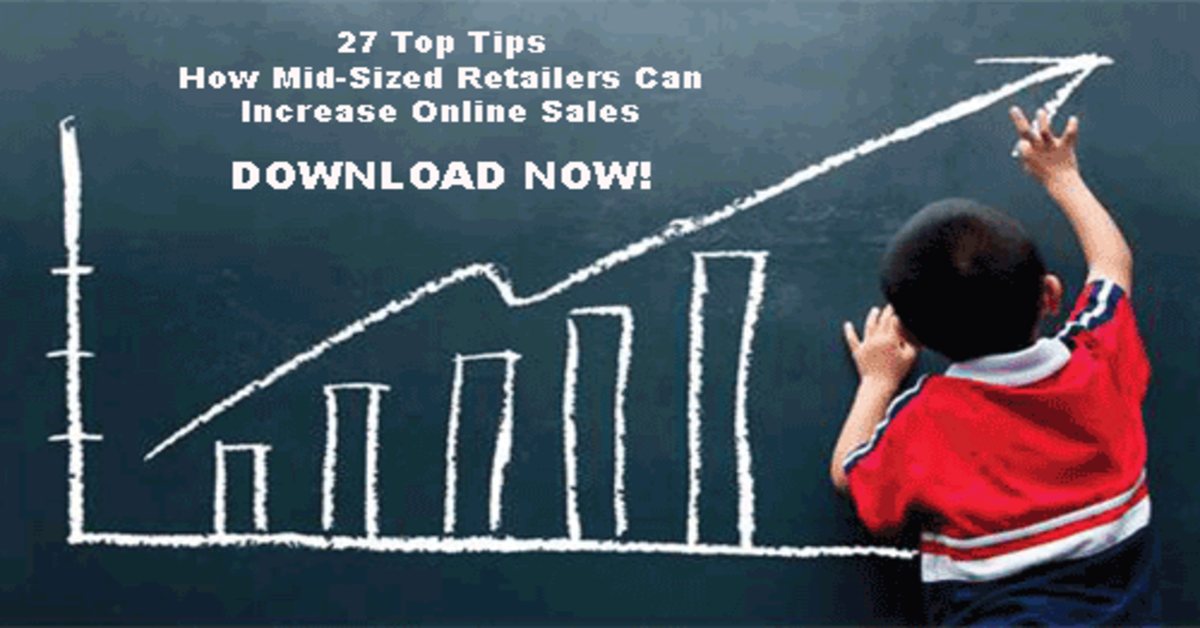
The metaphor of the sales funnel is already well-known to marketers, but what not many ecommerce managers know is that it is also very important in helping keep your conversion rate high up.
The sales funnel is a way of describing the purchase journey that every consumer goes through before buying a product.
It was developed with the aim of making the sales process predictable and scalable and in this way helping managers make better decisions about how to drive clients to the bottom of the funnel, in other words, to close the deal.
In ecommerce, the stages can be more detailed. Using tools such as Google Analytics we can see exactly what the visitors’ navigation is and what the conversions are at each stage.
In this article, we will explore each of the funnel’s four stages and how to identify based on your client’s navigation on your e-commerce site so that you can implement strategies to increase conversion. Let’s get on with it!
How does the sales funnel work in ecommerce?
The traditional sales funnel is divided into four stages, broken down as follows:
Visitors -> Leads -> Opportunity -> Clients
This metaphor considers that the number of visitors that your ecommerce site receives is greater than the number of clients it generates, that’s why there is the format of a funnel.
In Brazil, the average conversion rate is one 1.65% according to Sebrae data. That is, for every 10,000 visitors to an e-commerce site, on average 165 will make a purchase. But remember, this is the market’s average, so it’s normal to find beginners with a 0.5% conversion! For every 10,000 visitors, only 50 will buy.
The problem of low conversion of an e-commerce site is closely linked to its profitability. If you want to understand a little more about conversion and its impact, read this article prepared by us to explain in details the importance of conversion.
But why don’t visitors become clients? There are numerous reasons for this, and designing the funnel is important precisely in order to be able to understand what can be done at each stage of the funnel that will help ensure that fewer visitors “escape” the buying process.
How does the navigation funnel of an ecommerce site work?
Now that we are familiar with the four steps we mentioned above and which we will go into greater about over the course of this article, we now arrive at the point of understanding the client’s behavior while in the ecommerce store, just by taking into their navigation.
From a visitor’s arrival until they are converted into a sale, there are at least 6 stages. These are as follows:
Page navigation -> Shopping basket -> Checkout: Registration -> Checkout: Delivery details -> Checkout: Payment -> Finalization
This analysis is very important because we can accurately evaluate which stage is the one that the majority of visitors reach and which stage is the one that we most lose sales at. It is worth stressing that each ecommerce system can present different stages, mainly checkout process.
If an ecommerce site has a low conversion rate from the payment stage to the purchase completion stage, then the likelihood is that you do not have all the forms of payment that your client would like or alternatively the number of installments is not attractive.
However, if the conversion rate from the shopping basket to registration is low, the problem may be related to the prices, which may be higher than the client can afford.
It is worth remembering that over the course of the navigation funnel it is essential for ecommerce to have excellent usability so that navigation is simple and intuitive. Always pay attention to the best practices to increase your conversion while offering a better shopping experience.
Now that we are familiar with the concept of sales funnel and navigation funnel, let’s merge the two concepts by showing the people who make up each of these funnels and what you can do at any moment to ensure that they move forward to your ultimate goal: namely increasing your conversion and sales!
What are the stages of an ecommerce sales funnel?
First stage: visitors and navigation pages
Who they are: the first stage of the funnel includes those people who arrived at your virtual store by means of a number of channels, either paid media, social networks, Google search, or another source of traffic.
At that point, this user is only a number and his/her interest is varied: he may be a person who already knows what he/she needs and who is determined to buy, or may simply be someone who is curious, who just happened to come upon your ecommerce site but who does not yet know that he/she needs any of your products. One way to identify if visitors are moving around in the funnel at the visitors’ stage is to check the percentage of visitors who access the product pages, given that it is normal on an ecommerce site for the navigation flow to be as follows:
Main page (home) or Search Categories/Results -> Product page
What to do if the conversion rate for the e-commerce product page is low or decreasing: here are 3 possibilities:
- Your product mix is different from what the visitor wants, so when he/she searches and does not find what he/she needs, the visitor leaves the ecommerce site;
- The inventory availability of the products is low, so even if the visitor finds the item that he/she wants, it is not available for purchase;
- The usability of the search categories and results are bad, making it hard for the visitor to browse the e-commerce site.
What to do if the conversion rate of the product pages to the shopping basket is low or decreasing: here are 4 possibilities:
- The price of the product is higher than the client’s expectation in terms of expense, therefore he/she does not add the product to the shopping basket;
- When inserting the postal code, the time to delivery is very long. At this stage, this problem is less likely to happen because in general, the delivery time is determined in the shopping basket or at the checkout delivery stage;
- When verifying the forms of payment, either the one that is desired is not available or alternatively the number of installments is low. This problem is less likely to occur at this stage, because in general, the forms of payment and installment details are seen during the last stage of checkout;
- The usability of the page does not favor browsing.
Investing in content marketing and knowing how to use the SEO to optimize your virtual store is essential at this point. In addition, good usability helps to catch the user’s attention and make him or her more interested in your store. The better the usability of your e-commerce store, the better your conversion will be, therefore pay a lot of attention to it and follow good market practices.
Second stage: leads
Who they are: the leads are those visitors who are no longer a number and have gained a name. They are a type of qualified contact and represent those people who have shown some interest in one of your products.
What to do: There are a number of ways to turn a visitor into a lead, such as offering a discount or free shipping to the user’s e-mail. With this strategy, the e-commerce store offers something in exchange for the client registering. This can be a great way of increasing your e-mail base.
With the lead data, it is possible to segment marketing campaigns and e-commerce shop windows in order to present a product mix that matches each target audience’s profile. It is also worth remembering that every user who fills out your store’s registration is also a lead and should enter your base.
Third stage: opportunities
Who they are: opportunities are those visitors who have already gone through the initial navigation stages during which it was not possible to identify their interests. This stage, considering the client’s navigation funnel, is mainly determined by his/her navigation from the shopping basket onwards.
From that point on we are already certain that there is interest, even if it is only low. Therefore, we split these into opportunities in the initial stage, in other words, those that are only at the shopping basket stage, and opportunities at an advanced stage because they have already begun shopping.
What to do: this is the point at which we implement the strategy of segmenting the funnel for ecommerce according to the customer’s navigation history. When we look at the pages that the visitors are browsing, we can accurately identify where they are.
1) Shopping basket: If the client does not go beyond this stage, you may have the following problems:
a) Total price of the products is above what the customer can pay;
b) When inserting the postal code, the delivery time was longer than expected;
c) When entering the postal code, the delivery charges were higher than expected.
It is worth remembering that for the last two items, in the same way as with the product page, there is still no certainty as to whether they are the reason why the visitor leaves the store. These problems will be highlighted in other stages of the funnel.
2) Checkout – Login and password or Initial Registration: at this time, the two most common problems are as follows:
a) Your platform requires the creation of a login and password, generating one more step in the process;
b) The system asks for unnecessary information such as ID number, date of birth, gender, and other information that is not important for billing purposes. Remember: in the shopping process, you want the customer to buy. Any data that you are asking the customer for, which is not essential for the billing process, may reduce the conversion rate by up to 2% per additional field according to market research.
3) Checkout – Delivery details: now we are sure that there are 2 possibilities:
a) The delivery time was longer than expected;
b) The delivery charges were higher than expected.
4) Checkout – Payment: now we are sure of the 2 possibilities:
a) The store does not present the means of payment most used by the clients;
b) The number of installments are not in line with what was expected by the client.
In addition to the factors mentioned above, it is very important to bear in mind that, from item 2 onwards, in other words, from the stage of opportunities at an advanced stage, usability is one of the crucial factors in conversion loss.
Drawing a parallel would be where you have a client who goes to a brick-and-mortar store, picks up the goods, goes to the checkout to pay and at that point, gives up and leaves. He/she has already gone through the entire process, so it can be assumed that something went wrong at that point. In ecommerce poor usability at this stage has a major impact on conversion.
Last Stage: Clients
Who are they: after having gone through the previous stages and having concluded a purchase, your visitor has finally become one of your e-commerce store’s clients! But it should be borne in mind that the work does not stop here. In our article talking about ROI and repurchase, the importance of focusing on the client during the post-sales stage to increase the ecommerce store’s profitability becomes clear.
An important point during this stage is that not every order placed, is an order that is paid for and not every order paid for is an order that is billed. Therefore, it is important to analyze each of the 3 payment stages in order to increase conversion. What to do, for each of the steps:
1) Order placed but not paid for:
a) If the order was made using a credit card, your platform should be intelligent enough to inform you, at the exact moment that the order was finalized, that there was an error. Some e-commerce tools first off obtain the request and only then try to get the payment approved. In the case of the payment not being approved, an e-mail is sent to the client to redo the purchase. This can reduce the conversion of this stage by up to 10%.
b) If the order was made via bank payment slip, let the customer know various times that the deadline for payment will expire. If the deadline has already expired, automatically re-send a new slip, perhaps with a discount to encourage the client to pay it this time round.
2) Order paid but not billed:
It is very likely that you may have some problem with the logistics side of your ecommerce store. Structure your inventory and optimize the integrations in order to ensure that your ERP information is consistent with that of the platform.
Now that the visitor is your client, he/she can act as a great channel for obtaining new clients and you need to invest in great service and in high-quality after-sales to keep the client happy and make him/her come back for further purchases and to recommend the store to other people.
Word-of-mouth marketing is an excellent medium- and long-term strategy with low cost, therefore excellence in relation to customer service should be viewed as a marketing investment rather than as a cost.
It required a lot of effort to get your client to this point and you cannot waste this opportunity. Use remarketing strategies to impact him/her again at a lower cost and with an even greater effectiveness.
If your e-commerce store has a good repurchase rate due to the type of products, carry out recurring campaigns in order to offer your clients complementary or supplementary products. If you have sold the client a perfume, probably in 3 or 4 months time he/she will buy another one and you should anticipate this moment in order not to lose the sale.
You should keep in mind that the competition is increasing every day. If previously it was the case that to buy any product, a consumer did not have many options in terms of stores, mainly virtual ones, nowadays he is faced with a whole range of different e-commerce stores, which are all selling the same product.


















